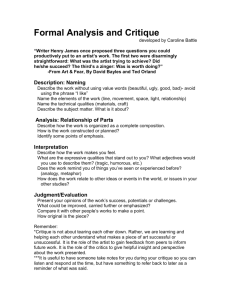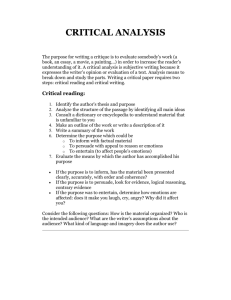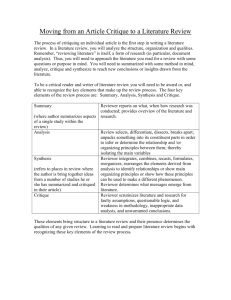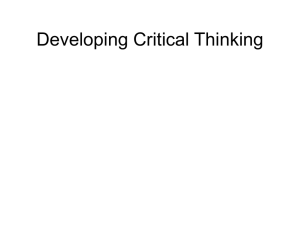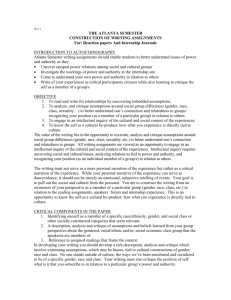How to Write a Critique
advertisement
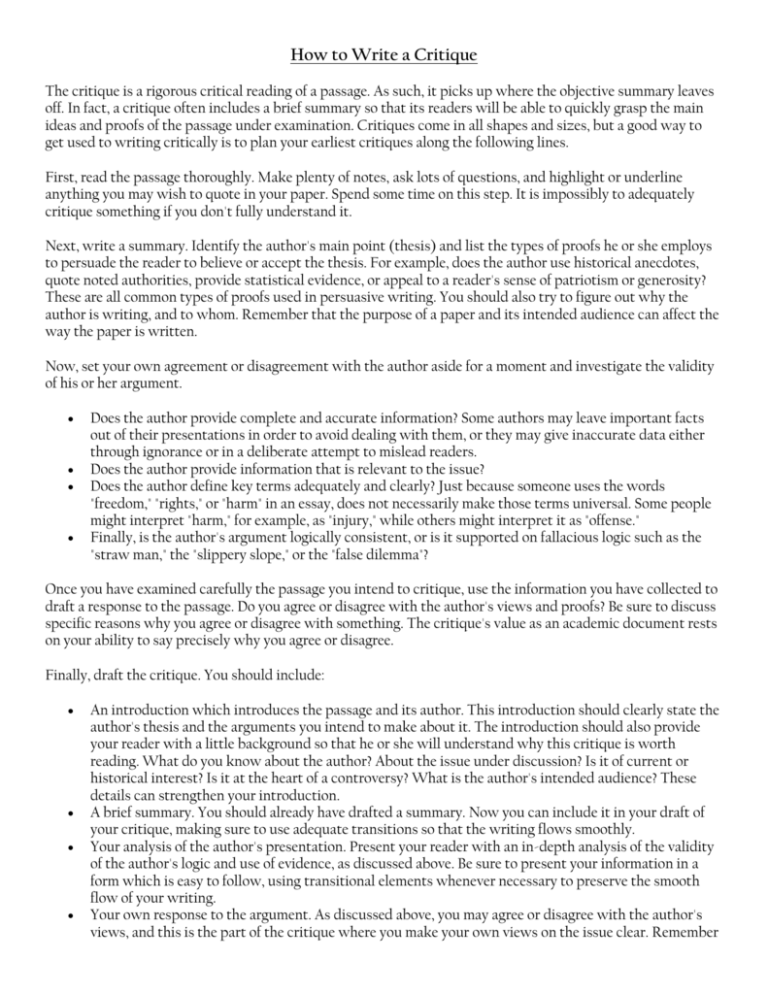
How to Write a Critique The critique is a rigorous critical reading of a passage. As such, it picks up where the objective summary leaves off. In fact, a critique often includes a brief summary so that its readers will be able to quickly grasp the main ideas and proofs of the passage under examination. Critiques come in all shapes and sizes, but a good way to get used to writing critically is to plan your earliest critiques along the following lines. First, read the passage thoroughly. Make plenty of notes, ask lots of questions, and highlight or underline anything you may wish to quote in your paper. Spend some time on this step. It is impossibly to adequately critique something if you don't fully understand it. Next, write a summary. Identify the author's main point (thesis) and list the types of proofs he or she employs to persuade the reader to believe or accept the thesis. For example, does the author use historical anecdotes, quote noted authorities, provide statistical evidence, or appeal to a reader's sense of patriotism or generosity? These are all common types of proofs used in persuasive writing. You should also try to figure out why the author is writing, and to whom. Remember that the purpose of a paper and its intended audience can affect the way the paper is written. Now, set your own agreement or disagreement with the author aside for a moment and investigate the validity of his or her argument. Does the author provide complete and accurate information? Some authors may leave important facts out of their presentations in order to avoid dealing with them, or they may give inaccurate data either through ignorance or in a deliberate attempt to mislead readers. Does the author provide information that is relevant to the issue? Does the author define key terms adequately and clearly? Just because someone uses the words "freedom," "rights," or "harm" in an essay, does not necessarily make those terms universal. Some people might interpret "harm," for example, as "injury," while others might interpret it as "offense." Finally, is the author's argument logically consistent, or is it supported on fallacious logic such as the "straw man," the "slippery slope," or the "false dilemma"? Once you have examined carefully the passage you intend to critique, use the information you have collected to draft a response to the passage. Do you agree or disagree with the author's views and proofs? Be sure to discuss specific reasons why you agree or disagree with something. The critique's value as an academic document rests on your ability to say precisely why you agree or disagree. Finally, draft the critique. You should include: An introduction which introduces the passage and its author. This introduction should clearly state the author's thesis and the arguments you intend to make about it. The introduction should also provide your reader with a little background so that he or she will understand why this critique is worth reading. What do you know about the author? About the issue under discussion? Is it of current or historical interest? Is it at the heart of a controversy? What is the author's intended audience? These details can strengthen your introduction. A brief summary. You should already have drafted a summary. Now you can include it in your draft of your critique, making sure to use adequate transitions so that the writing flows smoothly. Your analysis of the author's presentation. Present your reader with an in-depth analysis of the validity of the author's logic and use of evidence, as discussed above. Be sure to present your information in a form which is easy to follow, using transitional elements whenever necessary to preserve the smooth flow of your writing. Your own response to the argument. As discussed above, you may agree or disagree with the author's views, and this is the part of the critique where you make your own views on the issue clear. Remember that your own arguments must be well-supported. You must give compelling reasons for your agreement or disagreement with the author. A conclusion. Evaluate the author's overall success or failure in achieving his or her purpose. Also, remind your reader of the strengths and weaknesses of the passage. Once the critique is drafted, revise it, making sure you have emphasized the most salient points in your discussion. Check your sentence variety, your organization, and your word choice. Is the critique all it can be? Have you edited the critique to eliminate errors in spelling, sentence structure, and agreement? If you follow these simple steps, your critique should be concise, correct, and effective.

